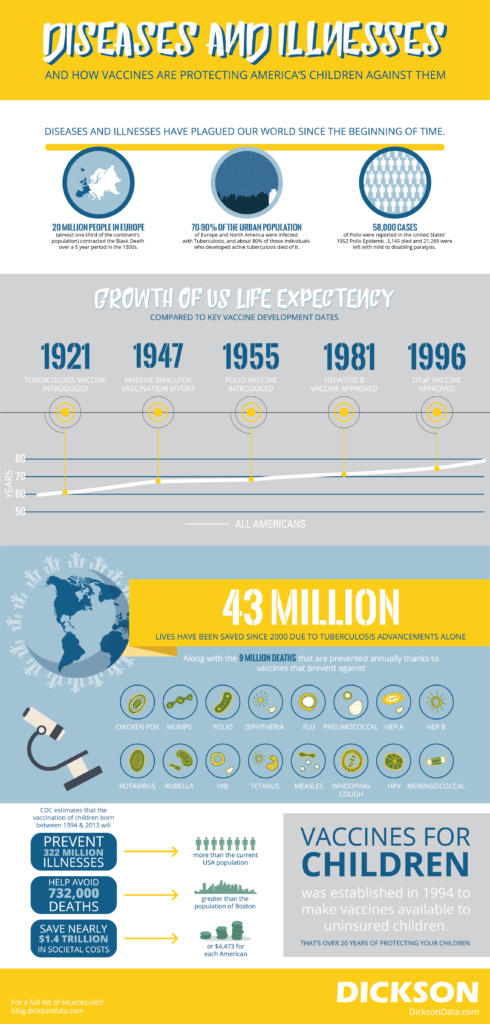Part 1 of a 2 part series on vaccines and school funding | Click here to read part two
 Vaccine programs do more than keep us from getting sick. They provide important, and often necessary, protection against illnesses that have proven over time to be fatal. Deadly contagions have plagued our world since the beginning of time. In the 1300s, the world faced the Black Death. In the 19th century tuberculosis was dubbed the White Plague. The early 20th century brought Polio. Today, each of these diseases have been dramatically reduced, if not eliminated, worldwide thanks to a variety of vaccines that have been developed and introduced into society.
Vaccine programs do more than keep us from getting sick. They provide important, and often necessary, protection against illnesses that have proven over time to be fatal. Deadly contagions have plagued our world since the beginning of time. In the 1300s, the world faced the Black Death. In the 19th century tuberculosis was dubbed the White Plague. The early 20th century brought Polio. Today, each of these diseases have been dramatically reduced, if not eliminated, worldwide thanks to a variety of vaccines that have been developed and introduced into society.
Conversations about the potential side effects that a vaccine may, or may not, offer to patients aside, they’ve helped Americans and members of the world’s population live longer, healthier lives. While there have been additional factors involved with extending American’s lives, like diet and disease treatment, according to UNICEF, (United Nations Children's Fund), more than nine million deaths are prevented annually thanks to these vaccines. In fact, the World Health Organization estimates that 43 million lives have been saved worldwide since 2000 thanks to advancements in Tuberculosis care alone. It’s for these reasons that vaccine requirements exist and why initiatives like the Vaccines for Children (VFC) program are in place. Below is the purpose of VFC as defined by the Center for Disease Control.
The VFC program is a federally funded program that provides vaccines at no cost to children who might not otherwise be vaccinated because of inability to pay. CDC buys vaccines at a discount and distributes them to grantees—i.e., state health departments and certain local and territorial public health agencies—which in turn distribute them at no charge to those private physicians' offices and public health clinics registered as VFC providers. Children who are eligible for VFC vaccines are entitled to receive those vaccines recommended by the Advisory Committee on Immunization Practices. These vaccines protect babies, young children, and adolescents from 16 diseases.
The program was established in 1994 and it has been estimated that the VFC has saved two of the country's greatest assets: Children and money. Not only has the program saved lives and reduced costs, but it could be theorized that the program has helped our public school systems. As students start heading back to school, consider this. It’s estimated that 164 million school days are lost each year because of student illness. That’s an average of 4.5 days per child. Our children can’t learn when they aren’t in a learning environment, so it’s important we work to fill empty desks. While keeping our students inside our schools so they can learn is important, the real value of vaccine programs in schools may actually be in the dollars and cents.
As inflation continues to outpace the average American income, every penny counts. Join us next week as we continue to look at the value of the VFC program and how it relates to funding in US schools.
Sources:
- http://www.infoplease.com/ipa/A0005148.html
- http://www.unicef.org/pon96/hevaccin.htm
- http://www.who.int/gho/tb/en/
- http://www.cdc.gov/vaccines/programs/vfc/about/index.html
- http://www.cdc.gov/vaccines/parents/diseases/index.html
- http://www.cdc.gov/vaccines/programs/vfc/index.html
